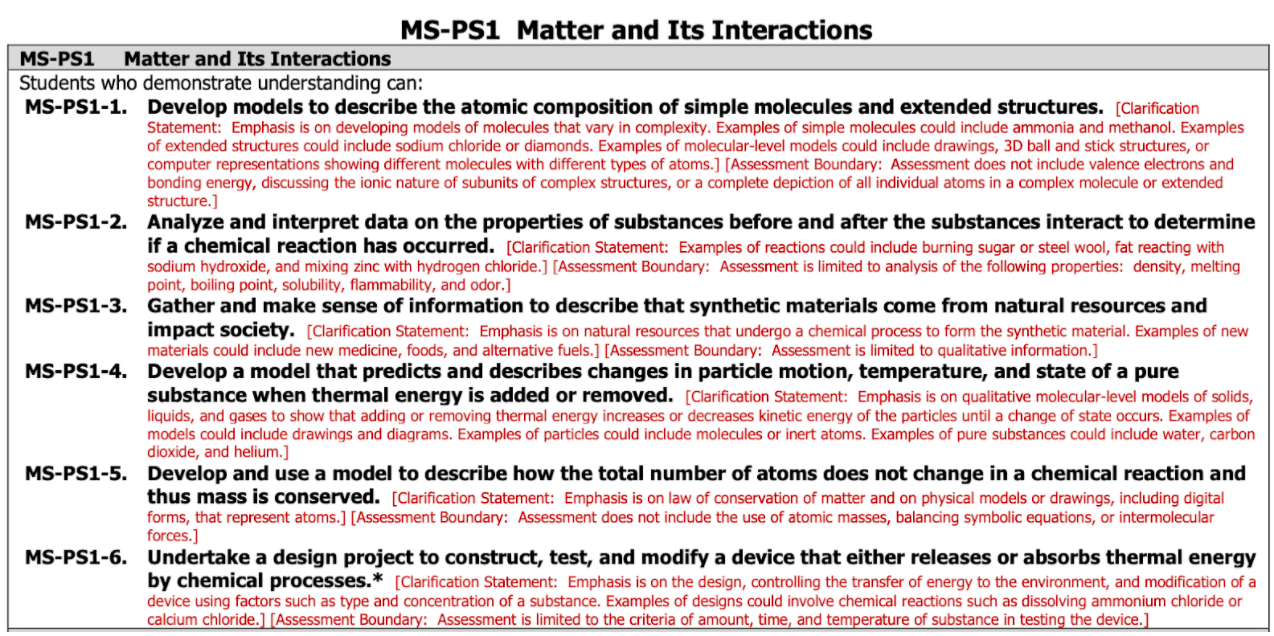The New Australian Curriculum and Stile
The science curriculum is changing. Stile has you covered.

Version 9.0 of the Australian Curriculum has been released. The how and when of implementing this curriculum will be determined by the State and territory curriculum, school education authorities, and non-government sectors and schools. Understandably, changes to the curriculum can cause a lot of uncertainty. Luckily the new science curriculum includes refinements rather than a wholesale rethink. And, if you’re already using Stile’s lesson resources, you’re very well placed to accommodate these changes. Plus, Stile X (our new student revision guide and notebook) will also suit the new Australian Curriculum for whenever your state implements it.
When we sat down to analyse the changes with a critical eye, we were delighted by how they validate and reinforce Stile’s existing approach. The move to more inquiry-based learning and stronger ties between science and society align perfectly with Stile’s long-standing emphasis on real-world contexts. The “clearer alignment to Mathematics and Technologies” moves closer to Stile’s model of the natural integration of the STEM disciplines and is supportive of our approach to numeracy.
Together with those broader themes, the new science curriculum also includes some minor resequencing of content knowledge across the year levels. These changes make sense to us and will allow further reinforcement of these complex, important scientific ideas. If we have a nitpick, our only concern with the changes is the increased prescriptiveness of some “content descriptions”. While this provides greater clarity on expectations, we worry this may limit the creative ways teachers might present these scientific concepts.
We also welcome the reinforcement of Indigenous perspectives. This is something we aim to get better at, and we’re currently in a phase of listening and learning the most appropriate way to do so.
To support you and your students, we’ve already begun aligning to the changes in the sequencing and will have updated units ready for implementation in 2023. View our proposed aligned Stile Curriculum here.
On Monday, 16th May, we hosted a webinar detailing the confirmed changes and how we're preparing for them in Stile. View the recording here. In 2021, we also hosted a live Q&A on the proposed revisions, where we answered questions submitted by our community of teachers. Catch up on the recording here.
Our take on Version 9.0
As scientists at heart, we couldn’t help but critically analyse ACARA’s changes to the Australian Science Curriculum. We are broadly supportive of the changes to the curriculum and feel well aligned with the thinking that underpins them. In particular, we’re pleased to see the encouragement of an inquiry-based approach, stronger integration between skills, society and science, and a more cross-curricular approach to STEM.
Our job is to understand science curricula, both Australian and beyond, so that we can craft the highest-quality resources for teachers. In particular, we’ve spent a great deal of time dissecting America’s curriculum, the evidence-based Next Generation Science Standards (NGSS), and the published research behind important global assessments such as PISA and TIMSS. This work has also inspired much of the underlying pedagogy and thinking behind Stile’s curriculum. It was reaffirming and reassuring to note that ACARA’s review team draws inspiration from those same sources.
More inquiry-based learning
Our analysis has revealed that the inquiry-based approach taken by ACARA is overwhelmingly similar to our approach to science education. We’re constantly driven to do our part in improving scientific literacy in students. We do this by creating engaging lessons anchored in the real world and empowering teachers in the classroom. Science is all about the desire to seek answers to unanswered questions, find new ways to innovate and fundamentally see the world through a critical and creative lens. ACARA’s changes align with and echo why Stile exists.
We, therefore, welcome the inclusion of example inquiry questions by ACARA. You may have noticed our most recent units have questions to encourage an inquiry-based approach (check out our unit on Energy). These questions are an excellent tool to reinforce real-world connections in science. They are aligned to the latest happenings in science and the big socio-scientific issues facing young people.

More prescriptive content descriptions
The revised curriculum removes ambiguity in the content descriptions by being more prescriptive – for example, the types of chemical reactions in Year 10 (synthesis, decomposition and displacement) are explicitly identified. Previously, the teacher had discretion around how they approached the topic and what chemical reactions they chose to focus on. This provided more flexibility in the way teachers differentiate their classrooms. We understand this move was made to give clarity to teachers. However, we’re concerned this will remove the last mile of freedom that allows teachers and resources like Stile to find creative ways to teach scientific concepts and ensure content is always current.
In our lessons, we begin all questions with cognitive verbs to clearly inform students of the level of thinking required (see our blog about why here). Cognitive verbs are widely used around Australia as a mechanism to indicate the level of thinking required from the student. When used comprehensively across the school, it can be a powerful tool to promote higher-order thinking. Version 9.0 of the Australian Curriculum includes cognitive verbs in content descriptions. Initially, the proposed revisions released in mid-2021 all began with ‘investigate’. We felt this was limiting. Version 9.0 has changed this to include a variety of verbs such as “describe,” “explain,” and “classify”. We welcome this adjustment as it clarifies to teachers the depth of understanding sought.
The inclusion of some of the elements of the NGSS in the revised curriculum is also encouraging. One aspect of the NGSS that’s particularly helpful is how they frame their content descriptions with clear assessment boundaries and clarification statements. This approach provides clarity without removing the last mile of freedom. We’d like to see a similar structure adopted in the Australian Curriculum.

On the other hand, one aspect of the NGSS that has been adopted is the idea of integration of three dimensions. The NGSS's three dimensions are Disciplinary Core Ideas, Science and Engineering Practices and Crosscutting Concepts. The dimensions of the new Australian Curriculum include learning areas, general capabilities, and cross-curriculum priorities. Some parallels can be drawn between these, with variation possibly prompted by the new Australian Curriculum spanning all learning areas, while the NGSS is specific to science education.
Stronger links between science and society
We want students to leave school with the confidence to tackle tomorrow’s problems and participate in public discourse around the ethics of scientific issues such as climate change, artificial intelligence and vaccination. This goal is constantly front of mind when we are designing our lessons. In 2020, of the 909 teachers who participated in our annual science education study, 64% agreed or strongly agreed that their students are becoming more interested in socio-scientific issues. However, only 50% agreed or strongly agreed that their students make connections between what they’re learning in science and critical social problems. We want to help students develop the skills required to tackle these issues while also covering the curriculum (check out our blog on our science news lessons). The new Australian Curriculum looks to strengthen the relationship between science and society, providing more alignment between science, technology, and maths. It indicates a desire to move the curriculum toward fostering confident, creative individuals, successful lifelong learners and active, informed members of the community. These have been at the core of what we do at Stile from day one.
What are we doing about these changes?
We’re continuously refining and improving our collection. Just like the Sydney Harbour Bridge, as soon as the workers have finished painting it, the painting begins again. Our approach at Stile has always been that our resources will never be “done”. Science is constantly changing, best practice education is always improving, and so are we. Our latest content roadmap demonstrates our commitment to ensuring that we stay ahead of the curve, ready to adapt. But we’re also constantly refining and improving our resources to ensure you receive the highest quality, most beautiful and engaging resources delivered through the lens of real-world science.
View the latest version of the Stile Curriculum, which accounts for the changes to the Australian Curriculum, here.
We’ll begin carrying out a few changes now in preparation for the implementation of the new curriculum in 2023 and beyond. One significant update is the change to climate change and evolution sequencing. In the proposed curriculum, these topics are split over two years rather than both only being taught in Year 10. For such important topics, this sequencing will reinforce these key ideas and give students more context. We’ll split Year 10 Global Systems into two units, one focusing on the carbon cycle (the new Year 9 unit) and the other focusing on analysing patterns of global climate change (the new Year 10 unit).
We’ll also work to cover Evolution over two years, initially focusing on sexual and asexual reproduction and the survival of species (the Year 9 unit) and the other unit focusing on the theory of evolution by natural selection. In preparation for these changes, we have recently released our latest unit. It asks the question, ‘Are we responsible for the rise of antibiotic-resistant superbugs?’ and teaches evolution in this context. Check it out here. We welcome these changes to strengthen the way both climate change and evolution are taught within our collection.
Whether you are using Stile or thinking about using Stile as your science resource, we have you covered. We guarantee curriculum-aligned, beautiful lessons based on real-world science and global issues.
If you have any questions, please contact me at clare.feeney@stileeducation.com or on 0447 945 533. Your school’s dedicated Stile specialist will also be able to answer any questions you may have.

